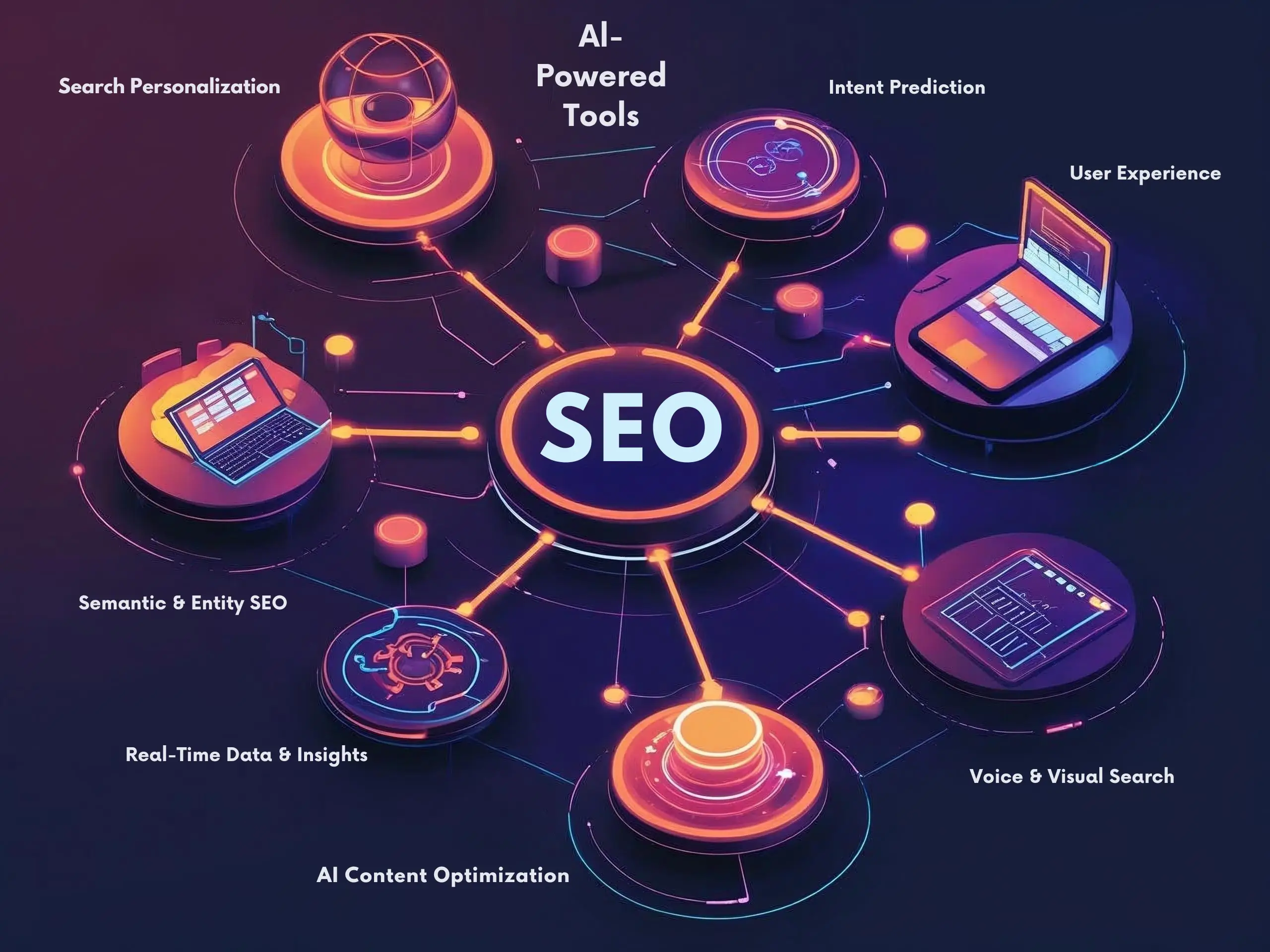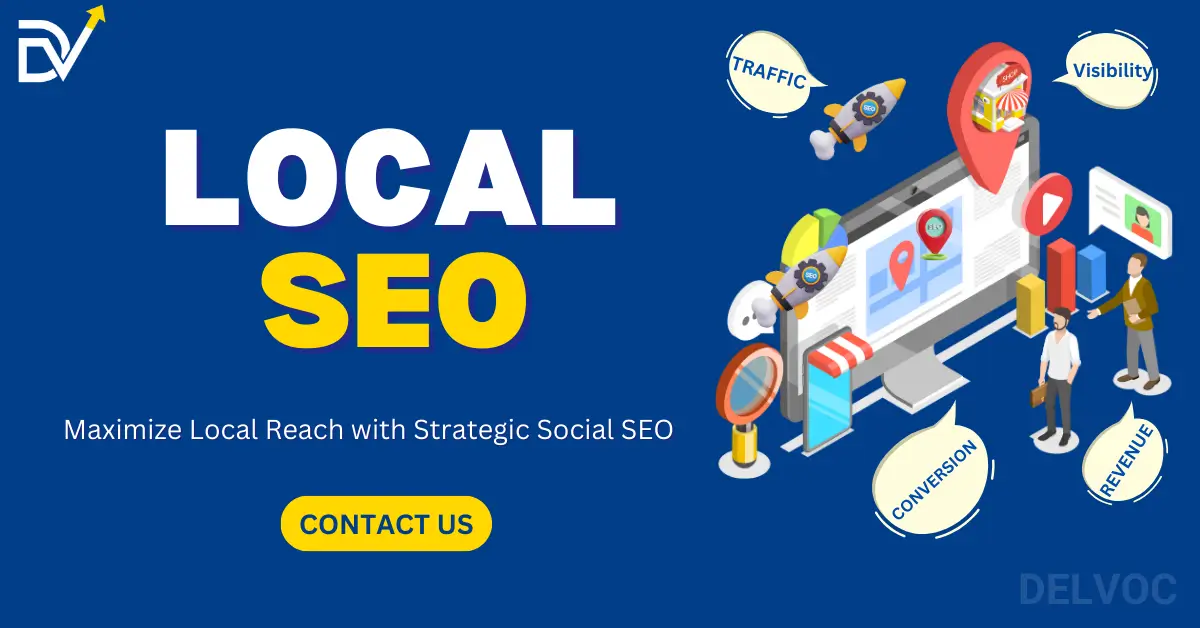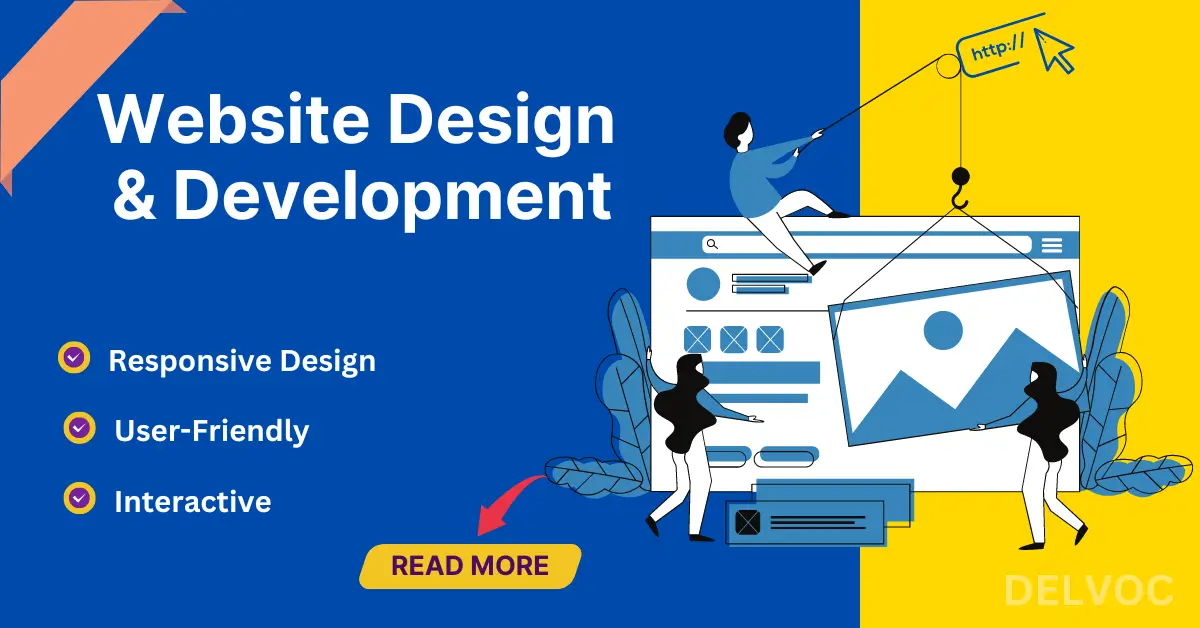Artificial Intelligence (AI) has made a huge impact on the digital landscape, especially in how search engines work and how businesses optimize for them. The days of SEO being solely about keywords, backlinks, and simple content are long gone.
New trends like AIO (AI Optimization), AEO (AI Experience Optimization), GEO (Geographical Optimization), and SXO (Search Experience Optimization) are shaping the future of SEO.
Let’s break down these trends, see what’s changing in search engines, how large language models (LLMs) like GPT are involved, and what the future holds for SEO.
What Is SEO Today?
Search Engine Optimization (SEO) is about making your website rank higher on search engines like Google. But SEO has evolved. It’s no longer just about tweaking titles and meta descriptions. SEO today involves creating content that aligns with what users are searching for and how they interact with the search results. It’s about understanding the intent behind a search, offering relevant answers, and ensuring a smooth user experience.
The Rise of AI in SEO
AI has slowly become part of the SEO process. AI-powered tools like GPT are changing how content is created, optimized, and even searched for. With the help of AI, businesses can now create highly personalized experiences, analyze user behavior, and anticipate what people might search next.

AI is involved in multiple aspects of SEO, but let’s look at some of the most important AI trends:
AIO – AI Optimization
AIO, or AI Optimization, focuses on using AI to enhance SEO. Traditionally, SEO has involved tweaking technical aspects like meta tags, URL structure, and ensuring content is well-optimized for specific keywords. AIO takes this a step further by using AI to automatically adjust content based on how users engage with it.
AI tools now analyze user behavior, engagement patterns, and content performance to tweak and optimize it in real-time. This allows content to evolve in response to user needs without manual intervention.
For example, AI can determine which words or phrases are resonating with readers and adjust content accordingly. AI is also used to analyze search trends, predict changes in user intent, and make suggestions on how to adjust content strategy.
In the near future, we’ll see more businesses using AI to create adaptive websites that change based on user interaction. SEO will no longer just be about predicting keywords but will evolve to predictive content creation.
AEO – AI Experience Optimization
AEO stands for AI Experience Optimization. In simple terms, it’s about using AI to improve the overall user experience. A website’s user experience (UX) plays a crucial role in its SEO ranking. Factors like page load time, mobile friendliness, and how easy it is to navigate all influence SEO.
AI Experience Optimization takes this to the next level by focusing on how users interact with content. With machine learning, websites can personalize experiences for different types of users. For instance, an AI algorithm might show personalized content based on a user’s previous browsing behavior or adjust the layout based on the device they’re using.
Search engines are becoming increasingly focused on delivering the best user experience, so businesses that invest in AEO will likely see better rankings. It’s not just about showing the right information; it’s about showing it in the right way. This trend is key to understanding how SEO is evolving from being keyword-centric to being experience-centric.
GEO – Geographical Optimization
Geographical Optimization, or GEO, focuses on tailoring your website’s content to specific locations. With the growth of mobile search and localized content, search engines are becoming more precise in delivering location-specific results. If you’re running a local business, GEO optimization is essential.
AI helps businesses optimize their content based on geographic data. By analyzing local search trends and understanding geographic signals, AI can help websites rank higher for local searches. This includes factors like using location-specific keywords, optimizing Google My Business listings, and ensuring that search engines know your business location.
The future of GEO is intertwined with AI, as machine learning helps search engines understand the nuances of local searches. SEO strategies will have to be more targeted, offering tailored content to users in specific geographic areas.
SXO – Search Experience Optimization
SXO (Search Experience Optimization) is a new concept that combines both SEO and user experience (UX). This approach focuses on providing a seamless experience from the moment a user enters a search query to when they engage with content on your website.
It’s about optimizing not just for search engines, but for how people actually interact with search results. For example, if someone types a question into Google, they expect an immediate, clear, and accurate answer. The use of featured snippets, knowledge panels, and AI-driven search results has made it essential for businesses to optimize for these features.
SXO combines technical SEO, content creation, and UX design to ensure that visitors have a smooth, valuable experience from the search engine results page (SERP) to the content on your site.
Search engines are becoming more focused on delivering relevant, concise, and engaging content, which means businesses need to invest in providing a better overall experience.
Changes in Search Engines: AI and the Evolving Algorithms
Search engines like Google have always been evolving, but AI has introduced significant changes. The introduction of AI-driven algorithms like Google’s RankBrain and BERT has meant that search engines can now better understand the intent behind search queries.
These algorithms don’t just focus on keywords—they focus on context, relevance, and meaning. This has made SEO much more complex but also more human-centered.
Search engines are constantly improving their ability to provide more personalized, accurate, and relevant results. For example, Google’s MUM (Multitask Unified Model) is an AI system that can understand complex queries and deliver comprehensive answers.
Google’s increasing focus on natural language processing (NLP) means SEO will continue shifting toward content that speaks in a conversational tone, rather than just relying on keyword optimization.
The Role of Large Language Models (LLMs)
LLMs, like GPT-4, are becoming an important tool for content creation, optimization, and even search engine behavior. These models can generate high-quality, contextually relevant content that aligns with what users are searching for. They help marketers understand how users interact with content and what types of information resonate best.
In the future, LLMs will likely play an even bigger role in search. As search engines continue to adopt AI technologies, they will rely more on models like GPT to understand context and offer more personalized search results.
This could change how businesses approach content creation. SEO will no longer just be about targeting specific keywords but about creating content that aligns with how search engines interpret language.
The Future of SEO
The future of SEO is closely tied to AI, machine learning, and a focus on user experience. As AI continues to shape how search engines work, businesses will need to adopt new strategies to stay competitive. Here are a few key takeaways:
- AI will drive more personalized experiences. Expect websites to be more adaptive to users’ needs, based on their behavior and preferences. Personalization will be at the heart of SEO.
- Experience will be just as important as content. SEO is no longer just about ranking for specific keywords—it’s about creating a seamless experience for users across search results and websites.
- Geography will matter more. As search engines increasingly focus on localized results, businesses will need to optimize their content for specific regions.
- AI and LLMs will enhance content creation. Large language models will play a larger role in content generation, making SEO more about aligning with how search engines understand language and user intent.
Key Takeaways
- AI trends like AIO, AEO, GEO, and SXO are changing the way SEO works.
- Search engines are focusing on context, relevance, and user experience.
- SEO is becoming more about the overall experience, not just technical tweaks.
- AI and LLMs will play a larger role in content creation and optimization.
- The future of SEO is about creating personalized, engaging, and relevant content for users.
The world of SEO is evolving fast, and businesses need to stay on top of these trends to remain competitive. The key is to understand how AI is shaping the future and to adapt your strategies accordingly. Whether it’s optimizing for AI, providing a better user experience, or focusing on local searches, SEO is moving toward a more human and personalized approach.
Frequently Asked Questions (FAQ)
AI can improve SEO by analysing user behaviour, predicting search trends, and adjusting content in real-time. It helps businesses create more personalized, engaging experiences for users, which can improve rankings.
SEO focuses on optimizing content for search engines, while SXO focuses on optimizing the entire search experience, from the search results to the content on your website. SXO combines SEO with a focus on user experience.
GEO optimization helps local businesses rank higher in localized search results by tailoring content to specific geographic areas. It ensures that search engines know your location and deliver your content to the right users.
AEO enhances the user experience by tailoring content to how users interact with it. This can lead to better rankings, as search engines prioritize websites that offer great user experiences.
No, SEO is not dead, and it never will be. SEO continues to evolve, adapting to the changing needs of users. Today, search engines prioritize user intent over keywords, focusing on providing the most relevant and helpful information. SEO has shifted towards a more semantic and entity-based approach, ensuring that search results directly answer user queries.










